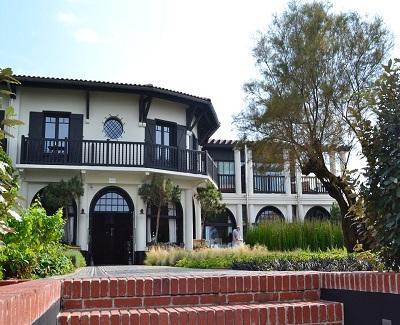The word Baluster comes from the Italian word balustrade, which is a pomegranate flower. In the olden times balustrade was shaped more like a partially opened flower or a flower bud. Several balustrades are spaced and joined together to form a decorative railing supported by baluster posts. Furniture and candlesticks were mostly shaped that way and most of the architecture was mostly shaped like pomegranate flower when designing staircases and railings. Stainless steel balustrades consist of over 1,000 components, which allows for quick installation.
Stainless steel balustrades’ design on architecture was very common in the late fifteenth century especially in the balconies of Venice and Verona. Rudolf Wittkower made a distinction between two types. One that was symmetrical and looked like an overturned vase-shape on top of another. The vases were separated with torus, which resembled a cushion or a ring, which is concave. The other one was followed by early vase-form balusters, which had balustrade around the drum. A vase baluster may be called a dropped baluster because of its low center gravity.
Stainless steel balustrades are a vital aspect of any building and may form a decorative piece. It also provides safety in a building. The fixtures can be found in old structures around the world rather than in most forms of modern architecture. The fixtures have been discovered in the remotest areas of India and Assyria. Assyria has the oldest balustrade designs. The fixtures were very common in the renaissance period and were found in a form more like the one we call balustrade today.
In the ancient times, the stainless steel balustrades were made from wood and clay because this is what was available at the time. Nowadays they are made from steel, wood, stone, glass and robust material. The fixtures are mainly fixed for safety purposes and also for decoration purposes. They are used as finishes in staircases, bridges, terraces and the balconies.
Stainless steel balustrades are separated by the same measurement the size of a square bottom section. They should not be placed too far apart as this diminishes there appeal. They normally terminate in columns, building posts or in heavy posts otherwise the structure will not be strong. Balusters can either be made from wood, stone, concrete, plaster, iron and plastics.
There are famous balusters and balustrades for example. The landscape architect Andre Le Notre, The temple of Athena in Athens, In Shakespeare’s Romeo and Juliet. Juliet was kept from falling off the balcony by a balustrade.

Stainless steel balustrades are designed to offer a user-friendly solution for the most personalized requirement. They are stylish and available in contemporary infill solutions. The fixtures are governed by the strict regulations that dictate a variety of aspects that the fixtures need to comply with.
Many contractors fail to take these codes into consideration and often leave the occupants of the building at risk. If you’re unsure if your balustrade installation complies with the regulations feel free to contact a contractor and they will assist you to ensure that your fixtures comply with all the applicable codes.
More information on: http://www.bettabalustrades.com.au/stainless-steel/
